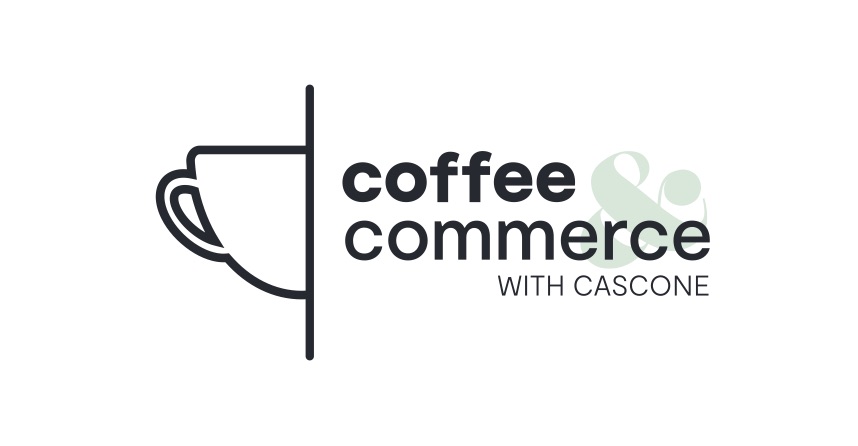
Coffee & Commerce with Cascone: Cyber Week Trends with Blue Moon Digital’s Robin Glanz
At the onset of COVID-19, one thing became clear: Retailers needed guidance. In an effort to help brands operate effectively and efficiently in this digital world, we launched Coffee & Commerce with Cascone: A biweekly series with bite-sized episodes tackling the latest in retail, featuring established marketers from today’s biggest brands.
With Black Friday and Cyber Monday in our rearview, Bluecore’s Senior Director of Marketing, Sarah Cascone, talks to Blue Moon Digital‘s SVP of Email & Operations, Robin Glanz, about what retailers saw during the holiday season. They discuss how the pandemic shifted first-time buyer habits, the expansion of Cyber Week and why purchase behavior is changing, as well as what retailers should expect in 2021 as consumers tighten their wallets and why personalization will be key.

CASCONE: Hi everyone. Welcome back to Coffee & Commerce with Cascone! Joining me today is Robin Glanz, SVP of Email & Operations from our premier agency partner, Blue Moon Digital, who just recently actually achieved gold accreditation status with Bluecore. For those who are not familiar, Blue Moon Digital is a digital consultancy that specializes in accelerating digital transformation for its clients in retail, consumer goods, beauty and skincare and a variety of other industries. Welcome Robin!
ROBIN: Thanks for having me. I’m excited to be here with you.
CASCONE: Awesome. So Robin and I had a chance to look at the data over the Black Friday-Cyber Monday period we just experienced and wanted to talk through some of the trends. So I’m going to start with the first and second time buyer trends, because I thought these were super interesting.
At the height of the pandemic, back in March and April, brands saw first-time buyers increasing up to 119%, indicating a large number of shoppers trying brands for the first time. This represented a major opportunity for retailers to get these shoppers to return and buy again. Now over the holiday period, I wanted to see if these buyers actually came back, and I wanted to see if that spike in first-time buyers showed up again during the holiday season. So it turns out only 5% of pandemic shoppers bought again on Black Friday. And on average, Black Friday and Cyber Monday purchases were 59% and 56% respectively from first-time buyers. This is such an important data point for a brand to consider when planning their strategy right now. Repeat purchases are critical to the longevity of a retail business. And given the majority of second purchases actually occur within a hundred days after the first purchase, this is the major retention opportunity for brands closing out this year. So Robin, what did you see among your retail customers?
ROBIN: Similar trends for our clients. We saw new visitors were slightly higher this year over last year, with over 50% new visitors each day of Cyber Week. So again, as you said, it’s such a huge opportunity to capitalize on these first-time buyers. And that’s going to be key to the success for the rest of the year, identifying these new customers and targeting them with complementary products and predictive intelligence is key.
CASCONE: Robin, how do you think this year has set a precedent for Black Friday and Cyber Monday in the future? What are some fundamental changes you think we’ll see for consumers?
ROBIN: For our clients, we saw Black Friday and Cyber Monday as the high revenue days that we expected. But this year we see more revenue starting the Tuesday before Black Friday and spreading out through the Sunday following Cyber Monday. So with the promotions launching earlier and Cyber Monday deals/post-Cyber Monday deals extending through the week, it looks like the “Cyber 5” could actually extend out more than that into a week, if not more. And we saw this for all digital channels as well as specifically for email.
Echoing on those findings, the activity on additional shopping days really held true for new users this year. Last year, we saw more activity on Cyber Monday and Black Friday. This year, new users spiked and spent nearly as much on both days.
Something to keep in mind is that as these big box stores closed for the holidays, particularly the foot traffic, we’re going to see increases in eCommerce. And as we see these shifts in the new users, we need to make sure that we’re engaging with them throughout the year across all digital channels.
CASCONE: Absolutely. So we did see also that Black Friday and Cyber Monday were still very important days for brands with year-over-year increases in orders, but it was definitely extended to a month long event — one that many retail leaders are confident will continue to next year. So I want to touch upon how brands can take advantage of this.
If I didn’t show my hand already, I think the number one priority is identifying your first-time buyers and engaging them with relevant recommendations within the first 100 days after that Black Friday-Cyber Monday purchase to get them to buy again. So this is what brands should be doing right now. Another strategy many of our customers like to leverage, especially during this holiday season when deals are running rampant, is determining who your discount and full price shoppers are so you’re not surfacing deals to shoppers who don’t need them to buy, which is so important to protecting margins.
Robin, what are some other tips and learnings you’re socializing with your customers?
ROBIN: Sure. We really need to think about leveraging personalization in terms of what products to promote. Across our client base, we found that outdoors and lower price point brands saw higher year-over-year revenue over the Cyber Week than the higher price brands. The pandemic’s impact on people’s financial stability or instability really identified some new segments for us.
And people are focusing on buying more with less and spending down in price point. So leveraging the learnings from the holiday and like you said, targeting people within this first a hundred days for the products that they want to purchase and are likely to purchase.
CASCONE: Awesome. And are there any learnings for even forecasting into next year?
RPBIN: What we saw is that the Cyber Week was higher this year. It really underperformed, according to the forecast and expectations for the particular days. And so in terms of promotions throughout the month, it’s something that we really need to focus on going into 2021. People are being more conservative with their budgets and they’re budgeting differently than they used to. So spreading out the promotions, like I mentioned, throughout the month, capitalizing on the information that you’ve gathered this year and personalizing your messages to the individuals based on their typical buying cycle or the next best purchase will be critical.
CASCONE: And how does that extend from a channel perspective for planning?
ROBIN: Really one of the most important strategic additions to 2021 is going to be cross-channel personalization and really focusing on how you’re leveraging all of the digital channels together: Email, SMS, paid media. They all need to be a coordinated effort, which requires a central audience focal point.
CASCONE: Totally agree. I think we’re going to see a lot of that going into planning for next year. Thank you so much, Robin, for sharing your insights across all of your customers. I hope this was helpful to our audience. So once again, thank you Robin for joining and thank you everyone for tuning in to Coffee & Commerce with Cascone.
Ready for More?
Ready for more insights and analysis on the latest trends? Click here for the full episode library of Coffee & Commerce with Cascone.






